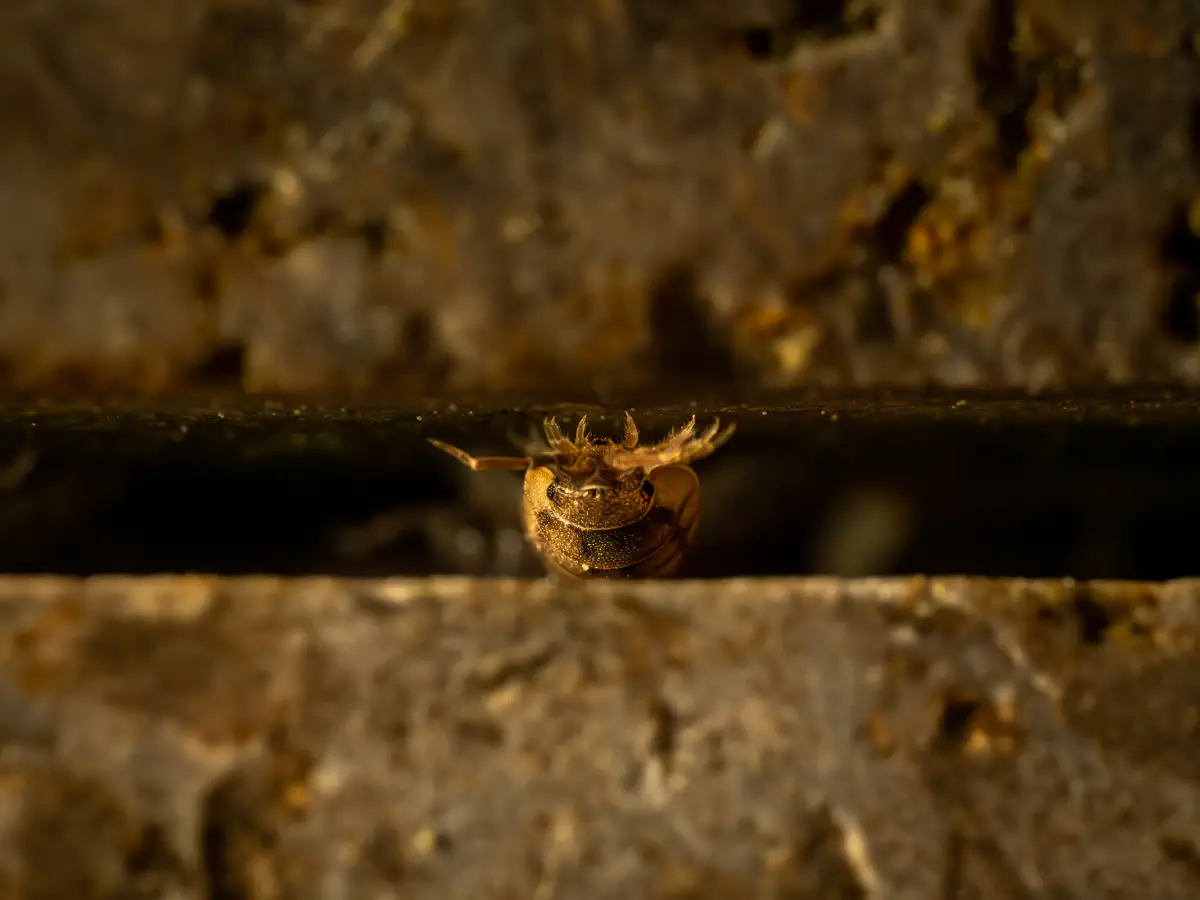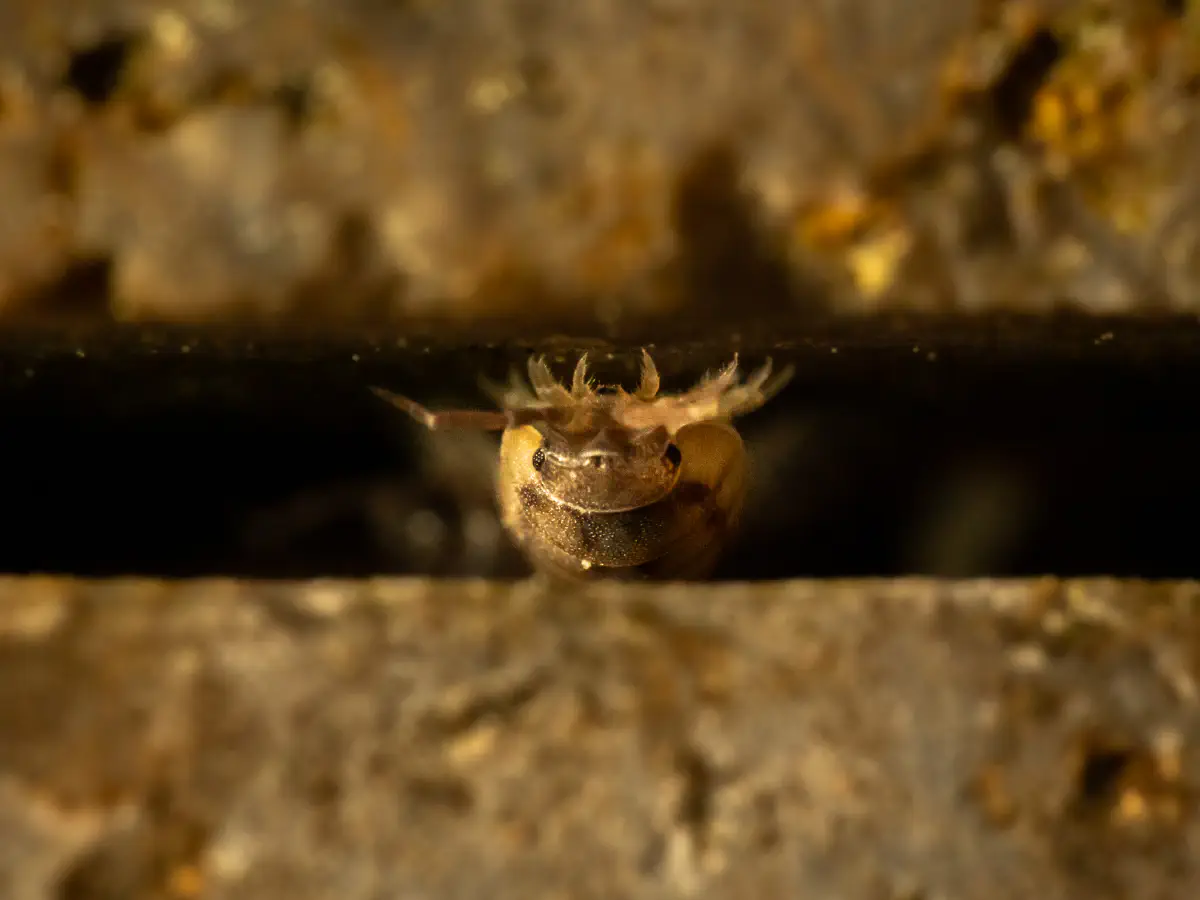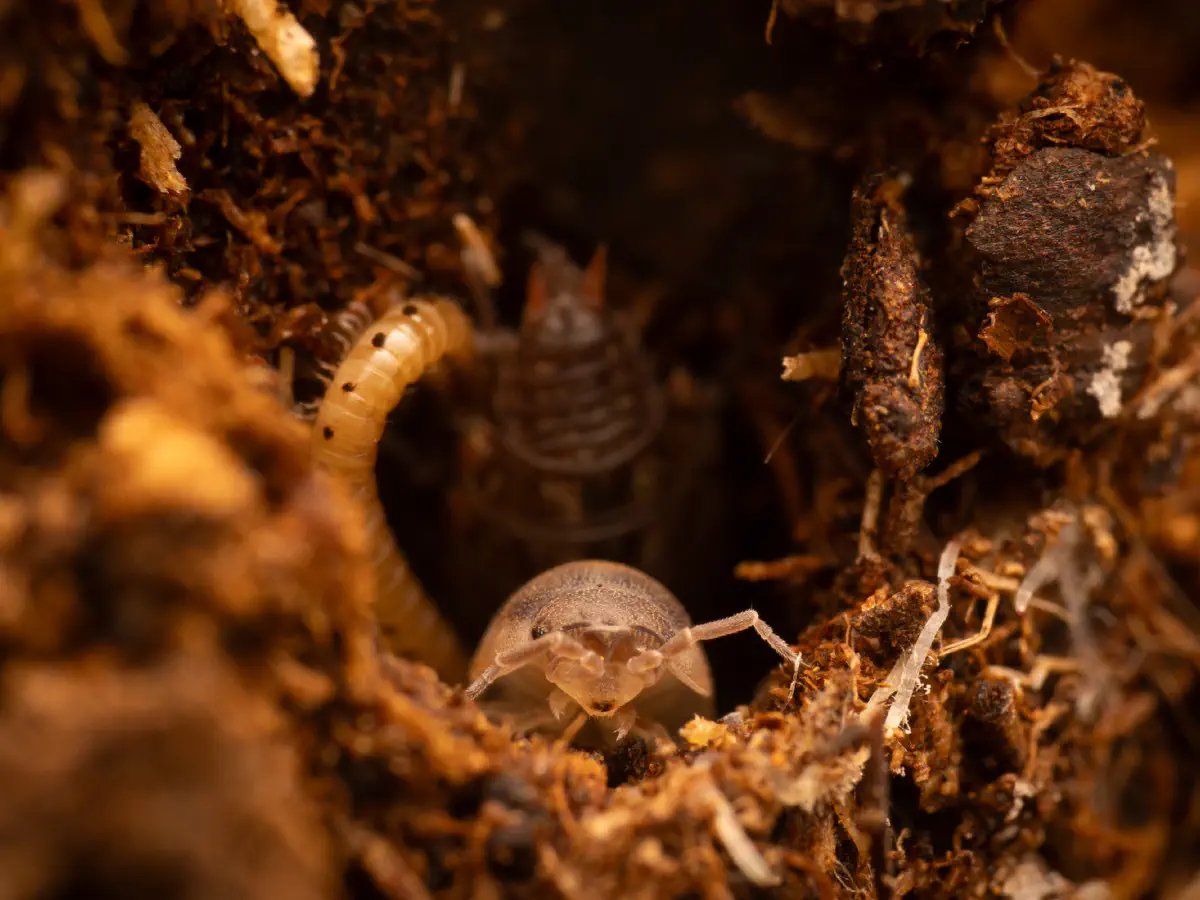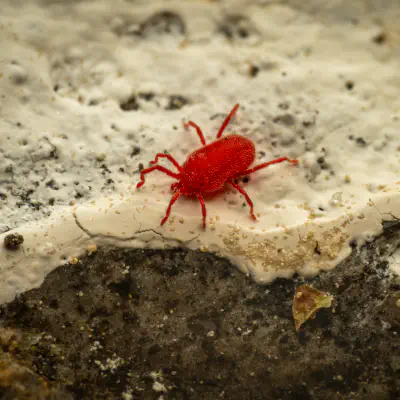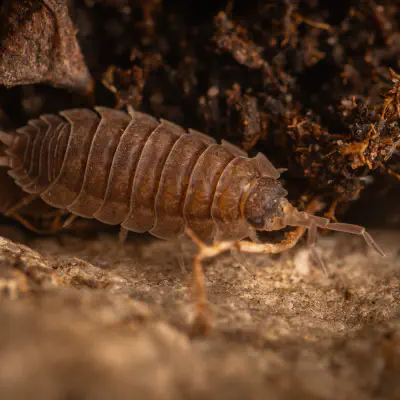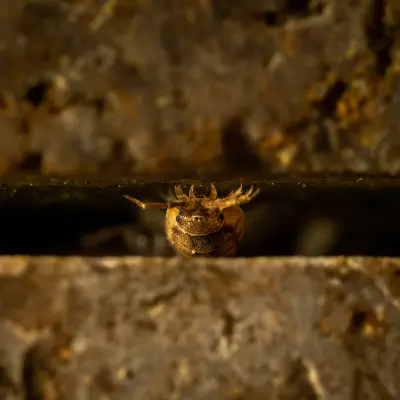Porcellio scaber respond to certain stimuli with kinesis behaviour. To attempt to find an environment where they lose less moisture and then stay there, P. scaber alter factors such as speed and rate of turning (orthokinesis and klinokinesis). When in a dry or hot environment, these woodlice have been observed increasing speed and turn more often in an attempt to leave the unfavorable environment. In a moist, dark, cool environment, they slow down dramatically and
often stop altogether. To avoid desiccation, most woodlice (including P. scaber) exhibit thigmokinesis, slowing down or stopping when in contact with multiple surfaces (such as the corner of a box or a crack between two bricks). This behaviour leads to clumping of woodlice, reducing the exposed surface area through which water can be lost. Another manifestation of this is that a woodlouse in a Petri dish is unwilling to move into the center of the
dish, preferring to stay near the edge.
Another reflex exhibited by P. scaber is turn alternation. During klinokinesis, turns alternate between left and right. This helps the woodlouse escape from a harmful environment or predator more efficiently as alternating turns average to form a straight line, unlike random turns which may well become a circle back to the predator. Several mechanisms for this have been proposed, such as short-term memory or following the outside wall,
but the theory with most support is the bilateral asymmetrical leg movement (BALM) mechanism, which suggests that on the original turn, the legs on the outside of the turn become relatively more tired, so end up being overpowered by the legs on the inside of the turn, causing it to turn the opposite way from last time.
Unlike the 'roller' species of woodlouse, such as Armadillidium spp., which are able to curl into a ball to
defend themselves, P. scaber is a 'clinger' and adopts a posture of tonic immobility when faced with the threat of predation. A study of this thanatosis behaviour found that individuals of this species had unique personalities with shy woodlice staying still for longer and bold woodlice staying immobile for less time.
